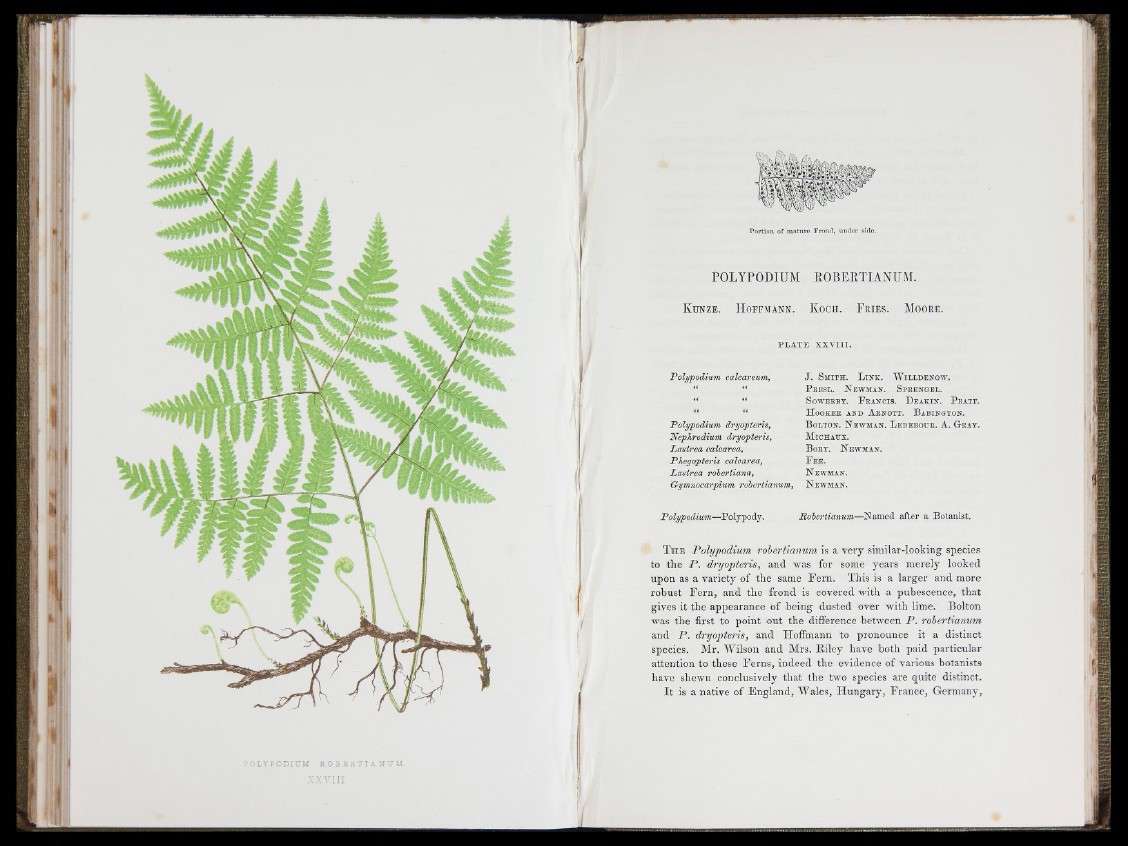
I
P o r t i o n o f m a tu r e F r o u d , u n d e r s id e .
POLYPODIUM ROBERTIANUM.
K u n z e . H o f fm a n n . K o c i i . F r i e s . M o o r e .
P L A T E X X V m .
Polypodium calcareum,
Polypodium dryopteris,
Nephrodium dryopteris,
L a stre a calcarea,
Phegopteris calcarea,
I^astrea rohertiana,
Gymnocarpium rohcrtianum,
P o lypodium—VoXypoAy.
J . S m i t h . L i n k . W i l l d e n o w .
P e e s l . N e w m a n . S p e e n s e l .
S ow E E B T . F r a n c i s . D e a k i n . P e . i t t .
H o o k e e a n d A e n o t t . B a b i n q t o n .
B o l t o n . N e w m a n . L e d e b o h e . A. G e a t ,
M i c h a u x .
B o e y . N e w m a n .
F e e .
N BW M A N .
N e w j ia n .
Rohertianum—Named after a Botanist.
T h e Polypodium rohertianum is a very similar-looking species
to the P . dryopteris, and was for some years merely looked
upon as a variety of the same F e rn . This is a larger and more
robust F e rn , and the frond is covered with a pubescence, th a t
gives it the appearance of being dusted over with lime. Bolton
was the first to point out the difference between P . robertianum
and P . dryopteris, and Hoffmann to pronounce it a distinct
species. Mr. Wilson and Mrs. Riley have both paid p articular
attention to these F e rn s, indeed the evidence of various botanists
have shewn conclusively th a t the two species are quite distinct.
I t is a native of E n g lan d , Wales, H u n g a ry , F rance, Germanji,